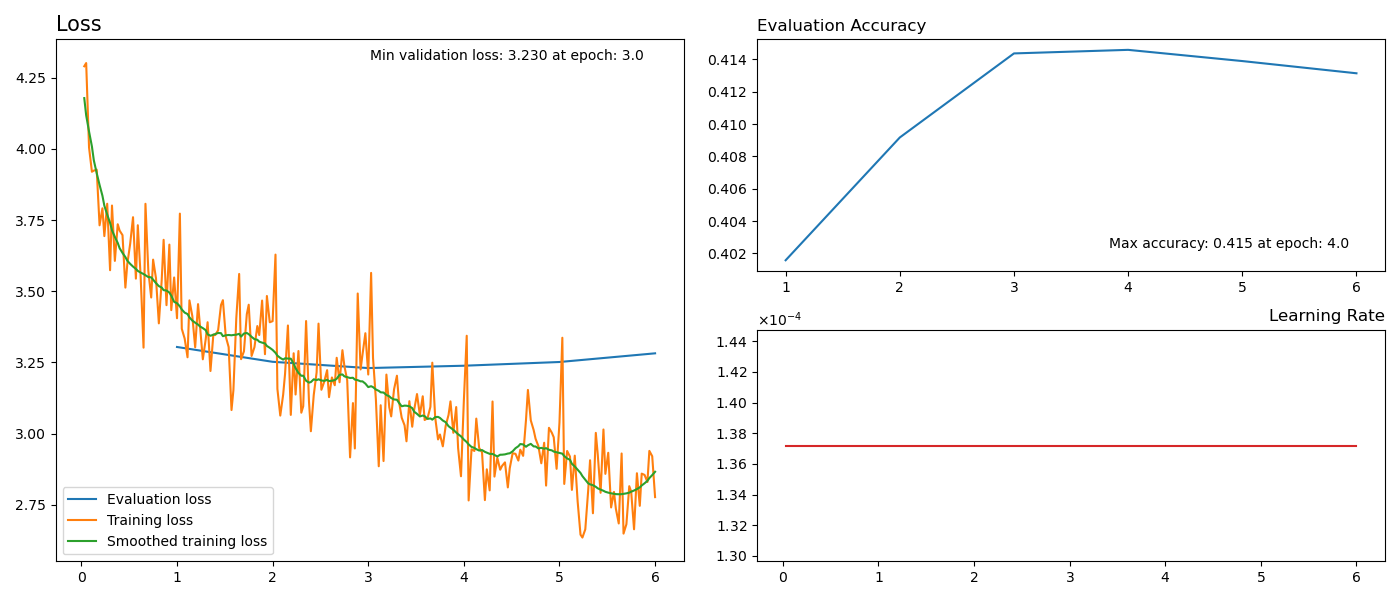A python project which, when given a file containing some text (e.g. works of Shakespeare), aims to generate text in a similar style. It relies on the Hugging Face Transformers Library to finetune the GPT-2 124M parameter model or train a model from scratch using GPT-2 architecture and byte-level BPE tokenization. Text is generated as a model is trained and graphs of the validation loss and accuracy at each epoch are produced.
To run on an Nvidia GPU the requisite drivers must be installed, a guide to do this on Ubuntu systems can be found here.
It is required to install the Hugging Face: transformers, datasets, and evaluate libraries. This can be achieved using pip install followed by the package name.
Before running LM_text_generator.py set the location of your text file as well as the output directory for the model in config.py. In addition, choose if the text file is to be used to fine-tune or train a model from scratch.
If fine-tuning for the first time, the GPT-2 124M parameter model will the downloaded and cached using the Hugging Face Transformers Library.
The text file will then be split into a training set and a validation set, which can be configured in preprocess.py.
The number of epochs and other training arguments can be altered in train.py and the Learning Rate Scheduler can be changed from the constant rate it is currently set to.
Text outputted from the model can be configured in generate.py. This includes: changing the text length, number of sequences, and adding a prompt to begin the text. Text can be generated after the model has been trained by directly running generate.py.
As the training runs, at each epoch the validation loss and accuracy is calculated. These are presented in a graph along with how the training step size changes. In order to smooth the training loss a Savitzky–Golay filter is applied.
Above is an example of a graph produced, in this case fine-tuning shakespeare. The best accuracy is found after 4 epochs, this is confirmed by the values shown. Below is an example of some generated text.
Parts of the train.py and preprocess.py script are drawn from the run_clm.py script provided as an example from Hugging Face. Where this is true is show in the comments.
A tutorial on transformers and language modelling can be found here. Using an obtained model to generate text is explained by Patrick von Platen in this tutorial. Finally, the Hundred-Page Machine Learning Book by Andriy Burkov is very helpful.
Apache License - Version 2.0

